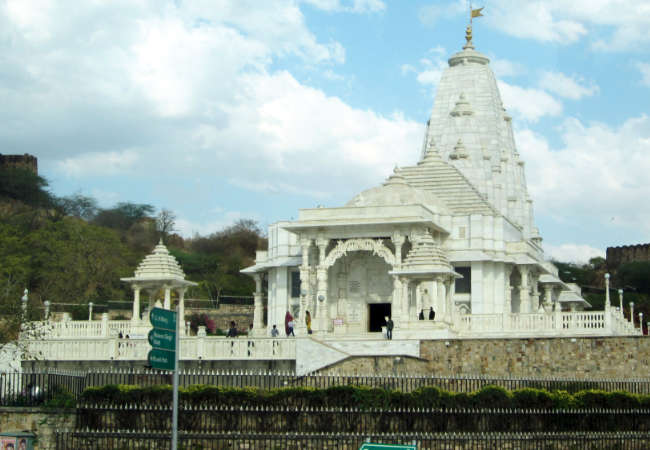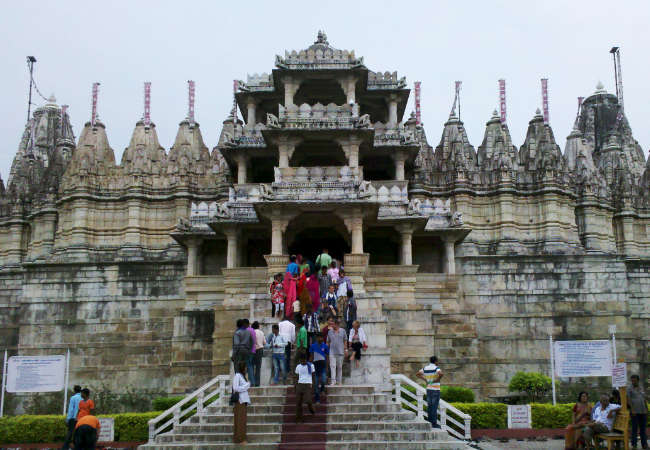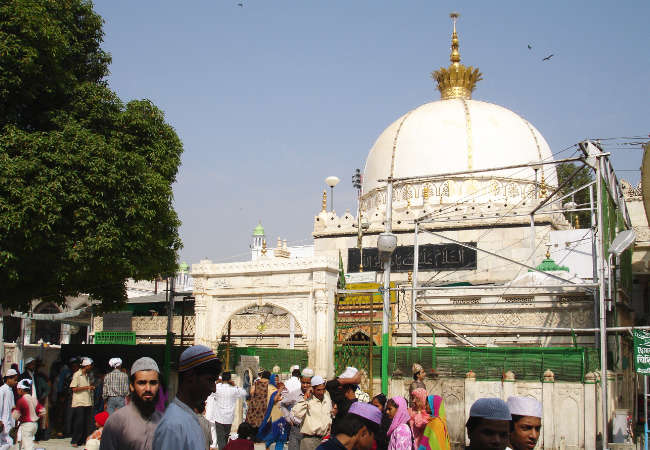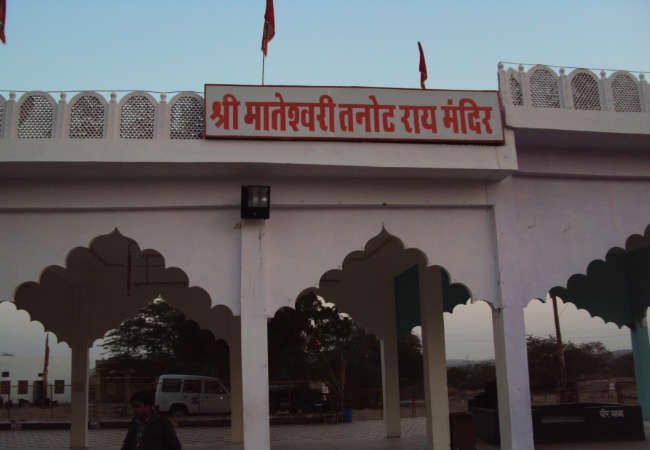



Rajasthan is indeed a place of the kings and queens but also depicts lot on monuments of worship and peace for all the religions. The Temples of Rajasthan depicts the great architectural structures that are focused on 8th to 11th century. The Temples of Rajasthan are the existing evidence to the artists and the lifestyles of the Maharajahs of Rajasthan.
Rajasthan is the center of attraction for desert lovers, heritage, wildlife enthusiasts, traditional and cultural values.The temples of Rajasthan mirror the creative magnificence of the stone carvers of yester years. A percentage of the well-known temples of Rajasthan are Eklingiji sanctuary, Dilwara Temples, Ranakpur Jain sanctuaries and the Mahavira Temple. The most well-known component of the sanctuaries of Rajasthan, situated in the western part, is single shikhara and complicatedly cut external chamber known as mandap. Due to the presence of a number of historic temples and famous pilgrimages, Rajasthan is also visited by many devotees. Here are some of the most famous temples of Rajasthan.

Located at the foot of Moti Dungri fort in Jaipur, the Birla temple is one of the several Birla mandirs located all around the country. The temple is sometimes also referred to as the Laxmi Narayan Temple. The enormous temple was built during the year 1988, by Birla Group of Industries, one of the business tycoons of India. The Temple is dedicated to Lord Vishnu (Narayan), the preserver and his consort Lakshmi, the Goddess of wealth. Birla Mandir is constructed in the finest quality of white marble.
The three huge domes of the temple represent three different approaches to the religion. Many of the deities of the Hindu pantheon are depicted inside the temple, and on the outside walls, great historical personages and figures from all religions are shown, including Socrates, Zarathustra, Christ, Buddha, and Confucius. The Laxmi Narayan Mandir is a modern architectural marvel, surrounded by lush green gardens.

The Brahma temple or the Jagatpita Brahma Mandir in Pushkar is known to be one of the very few temples of Hindu Lord Brahma. It is close to the Pushkar lake to which it also has an indelible link. Built mainly of marble and stone slabs, the temple holds the central images of Brahma and his second consort Gayatri. The temple is usually visited by pilgrims as well as holy men and sages. Located in the pushkar town, Brahma temple believed to be 2000 years old and on Pushkar Festival large number of devotees visit it.

Dedicated to Lord Shiva, the renowned temple of Eklingji is one of the most famous temples in Rajasthan. It is located about 22 km from Udaipur on national highway 8 in the town of Kailashpuri. The town is also often referred as Eklingji due to the temple. Ekling Nath is considered the King of Mewar and often called Medhpateshwar (lord of Medhpaat). The house of Mewar, which has administered Udaipur for several centuries, has been the hereditary diwans (chief minister) of Eklingji and trustees of Mewar. Eklingji has been the family deity of Mewar dynasty ever since it was built in 734 AD by Bappa Rawal.
A silver image of Nandi (bull of Lord Shiva) welcomes you. You can locate carvings of Nandi made out of black stone and brass in the temple too as you. The most striking feature of the temple is the four-faced idol of Eklingji (Lord Shiva) that has been carved from black marble. The idol is about 50 ft high and the four faces depict the four forms of Lord Shiva. The east facing part is Surya (Sun), the west facing part is Brahma (Creator), north facing part is Vishnu (Protector) and the south facing part is Rudra or Lord Shiva (Destroyer) himself.

The 600-year-old Karni Mata Temple is famous for its resident population of rats which are venerated in the temple. The temple, also known as Nari Mata Temple, is dedicated to Karni Mata, an incarnation of Goddess Durga. The idol of Karni Mata wields a trishul (trident) in her hand. It is popular belief that Goddess Durga lived in place where the temple stands today and performed miracles during 14th century.
Most temples dedicated to Karni Mata were built during her lifetime. The Karni Mata Temple at Deshnok is the most famous from all other temples dedicated to her, mainly because of the rat population. The temple is famous for its rat population. Many people offer sweets, milk and other edible offerings to the rats. The food nibbled by rats is also considered holy and consumed as prasad.White rats are considered especially holy and are believed to be reincarnations of Karni Mata and her sons.

It is located in a huge complex and is the main temple. This temple is dedicated to Adinathji, revered among Jains as the first Tirthankara (saint). This temple is a very huge and has around 29 halls and intricately carved 1444 pillars. No two pillars are the same. Built in the mid 15th century, the temple is famous for its engraved windows embellished with Jain figures. There is also the Parsavanath Temple, also known as Patriyon Ka Mandir, in the complex. Close to this temple, there are two other temples dedicated to Neminath (22nd saint of the Jains) and Surya Narayan (Sun God). The sight of Lord Surya driving his chariot of seven horses is marvelous. Just one kilometer away from the temple complex is the temple of Amba Mata.

Jagat Temple also called as Ambika Mata Temple is a small shrine of Goddess Ambika Devi made in the crevice of a rock. Goddess Ambika Devi is known as a form of Goddess Durga. This temple is also famous as 'Ambika Mata temple' and due to its location in the Jagat village of Udaipur, known as Jagat temple. Known for its exterior intricate carvings, Jagat Temple was built in 961 AD. Jagat temple is the well preserved temple of the 10th century and also made Jagat village as ‘Khajuraho of Rajasthan’. This temple comprises the shrine of Ambika Mata were Goddess Durga is worshipped as Shakti (Power) which is known as the sole source of energy.
Jagat temple was only an elevated altar at the time of Pratihara period a long time ago. Only a principal image of the Goddess is placed here. It comprises a columned prayer hall called Mandapa which has projections on two sides and a small loggia in obverse. This prayer hall has windows with magnificently carved panels and its ceiling rises shapes in the pyramid shape. Prayer hall also attracts as it has carved panels of Lord Ganesha. Temple also has outstanding architecture depicting various sculptures which include Gods and Goddesses, dancers and singers of the divine court.

Ajmer Sharif Dargah is also known by the name of Dargah Sharif, Khawaja Gharibnawaz Dargah Ajmer, Ajmer Dargah, Ajmer Sharif. It is most popular and important Muslim pilgrimage in Rajasthan. People from all the communities come here and pay homage in the dargah of Khwaja Moinuddin Chishti at Ajmer Sharif . Ajmer Sharif is famous for fulfilling the wishes of the devotees. Various followers of different religion offers flowers, velvet cloth, perfume (non-alcoholic) and sandalwood at the Dargah.
Some of the monuments you will come across while going to Ajmer Sharif Dargah are :
Nizam Gate : It was built in 1911 by Mir Osman Ali Khan of Hyderabad Deccan.
Buland Darwaja : It is a huge gate built by Mahmood Khilji and his successors.
Degs : Degs means a huge utensil used for cooking in historic times.
Samakhana or Mahfilkhana : A Place where you can enjoy the amazing soul touching Qawwali.
Begami Daalaan
Sanadli Masjid

Tanot Mata Temple or Mateshwari Tanot Rai Mandir is the same temple you have seen many times in the Bollywood 'Border' movie. Tanot Mata temple remained untouched despite the heavy shelling by Pakistan during Indo-Pak war of 1971. The temple is located very close to India - Pakistan Border and tourist are not allowed to go beyond this temple. As per the oldest Charan literature Tannot Mata is new clone of divine goddess Hinglaj Mata, and than after Tannot Mata becomes Karni Mata, And known as Goddess Of Charan's.
Goddess Tanot is believed to be the incarnation of Goddess Hinglaz which is located in Lasvela district of Baluchistan. In 847 AD foundation of Goddess, Tanot was kept and idol was installed. Generation of Bhati Rajput takes care of this temple. Earlier during the Indo-Pak war of 1965, Tanot Mata temple did not even touch by targeted bombs by Pakistan Army whereas all the bombs did not explode which falls in the vicinity of the temple due to Goddess Tanot divine power. Those unexploded bombs now can be seen in the Tanot Mata temple museum.

